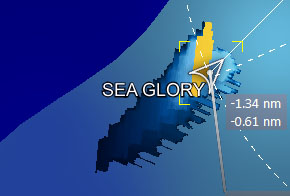Case: Maritime Safety
Airbus subsidiary SIGNALIS use Tekron's NTS100 with their STYRIS® package, used to monitor sea traffic in real time. The package contributes to a safer and more secure maritime environment by collecting, processing, consolidating, enriching and displaying data from sensors like radar, AIS, RDF, cameras, weather stations and sonar.
With STYRIS® being used by Coast Guard, Navies, Port Authorities, and private services, it needs to operate continuously to help protect the waterways where it is installed. It therefore integrates the latest technologies to ensure accuracy and reliability.
Delivered as a turnkey system, STYRIS® is made up of multiple servers each needing an accurate time base to stay in sync with each other. Tekron’s NTS100 is the device for the job. It provides reliable time sync for the onsite servers, ensuring that the data presented is in the correct sequence when being displayed to the operators. This avoids data being overwritten or lost due to unsynchronised server operations.
Our critical maritime surveillance systems need a good NTP server for time synchronization: the NTS100 suits our needs since it is reliable and easy to set up
-Jean-Noe, Head of System Integration and Validation
By installing the NTS100, SIGNALIS not only get an accurate time base, but also maintain a secure system by not having to use the internet to contact a time server.

More about STYRIS®
STYRIS® is SIGNALIS’ single product line, and is designed to provide the best Human Machine Interface (HMI) experience for operators to monitor marine traffic in real time, and interact with critical maritime situations.
Using STYRIS®, users get a simplified operational picture, increasing the horizon and accelerating the decision process from both a safety and security perspective. Typical applications for STYRIS include Vessel Traffic Services (VTS), Coastal Surveillance Systems (CSS), and Maritime Critical Infrastructure Protection (CIP) systems.


